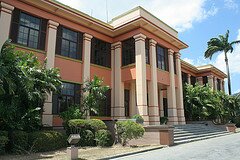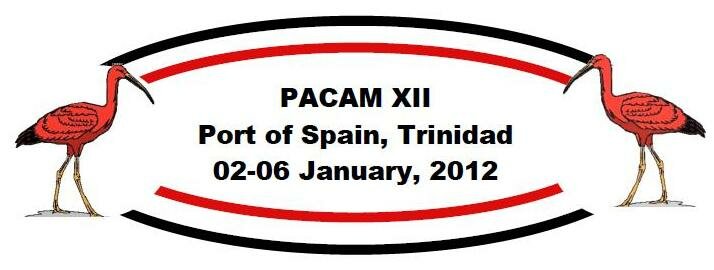Mechanics of Smart Cities: Urban Infrastructure Challenges
I. Introduction
Smart cities, once a futuristic concept, are now a reality in our modern world. They represent an innovative approach to urban development, driven by the integration of technology into every aspect of city life. This transformation holds great significance in addressing the evolving needs of urban populations, optimizing resources, and improving overall quality of life. In this article, we'll delve into the mechanics of smart cities, exploring their definition, the pivotal role of urban planners, the impact of technology on urban infrastructure, and the challenges they face. Additionally, we'll examine the economic opportunities they offer and the perspective of students, as they are the future leaders in this transformative field.
II. Defining Smart Cities
A. Explanation of what constitutes a "smart city."
A smart city is more than just the deployment of technology; it's a holistic approach to urban development. Smart cities leverage data, sensors, and technology to enhance the quality of life for their citizens, improve operational efficiency, and reduce resource consumption. These innovations encompass transportation, communication, healthcare, education, and sustainability.
B. Characteristics and goals of smart city initiatives.
The core characteristics of a smart city include integrated urban planning, efficient infrastructure, and a strong focus on sustainability. Goals typically involve improving urban services, promoting sustainability, enhancing the quality of life, and fostering economic growth.
C. Historical context and the evolution of smart cities.
Smart cities have their roots in the urbanization trends of the 20th century. The need for efficient infrastructure, coupled with the evolution of the internet and technology, has led to the smart city concept we see today. The development of smart cities is an integral part of creating comfortable conditions for today's youth, who are used to using all the benefits of technological progress, from the ability to buy literary analysis paper via https://writer-elite.com/literary-analysis-essays/ to ordering anything from another country or even continent in a few clicks.
III. The Role of Urban Planners
A. How urban planners contribute to the development of smart cities.
Urban planners play a pivotal role in shaping the future of smart cities. They design and implement strategies to integrate technology into urban environments. Their responsibilities include land use planning, zoning, and infrastructure development that supports a smart city's goals.
B. Challenges urban planners face in integrating technology into urban infrastructure.
Urban planners encounter various challenges, including the need for interdisciplinary collaboration, managing data, and ensuring that technology benefits all residents. Overcoming these challenges is essential for the successful implementation of smart city projects.
C. Case studies of cities where urban planning has been instrumental in smart city transformation.
Cities like Singapore, Barcelona, and Copenhagen have been exemplars of effective urban planning in the context of smart city development. These cities demonstrate how urban planners have played a critical role in transforming their urban landscapes.
IV. Technology's Impact on Urban Infrastructure
A. Technological advancements driving the transformation of urban infrastructure.
Technological innovations, such as the Internet of Things (IoT), artificial intelligence (AI), and data analytics, are instrumental in reshaping urban infrastructure. IoT sensors collect data on various aspects of city life, enabling informed decision-making.
B. IoT, AI, and data analytics as key enablers of smart cities.
IoT sensors provide real-time data on traffic, energy consumption, air quality, and more. AI processes this data to optimize traffic flow and energy usage, while data analytics helps cities make data-driven decisions for long-term sustainability.
C. Real-world examples of technology implementations in urban settings.
Cities like Amsterdam and Seoul have integrated technology into their infrastructure, with smart traffic management systems, waste management solutions, and energy-efficient buildings. These implementations serve as models for other cities seeking to enhance their urban environments.
V. Urban Infrastructure Challenges
A. Inadequate transportation systems and congestion.
One of the most pressing challenges in urban areas is the inadequacy of transportation systems, leading to traffic congestion. Smart cities address this by using technology to optimize traffic flow, reduce congestion, and improve public transportation.
B. Energy consumption and sustainability issues.
The energy needs of urban populations are a major concern. Smart cities focus on sustainability, incorporating renewable energy sources, energy-efficient buildings, and smart grids to reduce energy consumption.
C. Digital divide and equitable access to technology.
Ensuring equitable access to technology and internet services is a critical challenge. Smart cities work to bridge the digital divide by providing internet access to underserved communities and promoting digital literacy.
D. Privacy and security concerns in a connected urban environment.
As smart cities collect and analyze vast amounts of data, concerns about privacy and cybersecurity arise. Robust measures and policies are essential to protect citizens' data and maintain public trust.
E. Financial implications and funding challenges.
Implementing smart city initiatives can be costly. Cities must explore public-private partnerships and secure funding to support these projects, making financial sustainability a significant challenge.
VI. Business Opportunities in Smart Cities
A. The economic landscape of smart cities and emerging business opportunities.
Smart cities present a wealth of economic prospects for businesses. Companies in various sectors, from tech giants to startups, can participate in the development and implementation of smart city solutions. Opportunities include providing software and hardware for smart infrastructure, urban mobility services, and data analytics platforms.
B. How businesses can contribute to and benefit from smart city projects.
Businesses can actively engage in smart city projects by offering innovative solutions that address urban challenges. Collaborating with municipalities to implement these solutions not only contributes to city development but also generates revenue for businesses. For example, companies specializing in mobility services can provide smart transportation solutions that reduce congestion and enhance urban mobility.
C. Profiles of companies succeeding in the smart city sector.
Several companies have already made their mark in the smart city sector. For instance, Siemens has played a significant role in transforming cities like Barcelona into smart, sustainable urban areas. IBM's Smarter Cities initiative has also demonstrated the potential for technology-driven urban development.
VII. The Student Perspective
A. The role of students in shaping the future of urban planning and technology.
Students are a driving force in the development of smart cities. They bring fresh perspectives, creativity, and a passion for innovation to the field. Their active involvement is crucial for making urban environments more sustainable and efficient.
B. Educational paths and opportunities for students interested in smart city development.
Students interested in contributing to smart city projects can pursue a range of educational paths, including urban planning, computer science, engineering, data science, and sustainability studies. Scholarships and internships from government and private sector organizations offer valuable opportunities to gain hands-on experience.
C. Student-led projects and initiatives in the field.
Many student-led projects and initiatives are already making an impact. From developing apps for public transportation optimization to organizing sustainability awareness campaigns, students are actively participating in the smart city movement.
VIII. The Way Forward
A. Discussion of potential solutions and innovations addressing urban infrastructure challenges.
Addressing urban infrastructure challenges in smart cities requires innovative solutions. Collaborative efforts among urban planners, technology enthusiasts, businesses, and students are essential for developing sustainable solutions. Initiatives like carpooling apps, energy-efficient building designs, and community engagement programs can pave the way forward.
B. Collaboration between urban planners, technology enthusiasts, businesses, and students.
Successful smart city development necessitates close collaboration among these key stakeholders. Urban planners must work with technology experts to design integrated systems that address the needs of the community. Businesses can offer their expertise and resources, while students can bring fresh ideas and enthusiasm to the table.
C. The importance of ongoing research and development in smart city mechanics.
Continual research and development are crucial to the ongoing success of smart cities. New technologies and innovations will continue to emerge, requiring cities to adapt and stay at the forefront of urban development.
IX. Conclusion
In conclusion, smart cities represent a transformative approach to urban development, driven by technology and innovation. They offer numerous opportunities for businesses and students to actively contribute to their growth and improvement. Addressing challenges such as inadequate transportation systems, energy consumption, and equitable access to technology requires collaboration among urban planners, technology enthusiasts, businesses, and students. As we move into the future, the mechanics of smart cities will continue to evolve, offering more sustainable, efficient, and connected urban environments.
X. Additional Resources
For those interested in delving deeper into the mechanics of smart cities, we recommend exploring the following resources:

